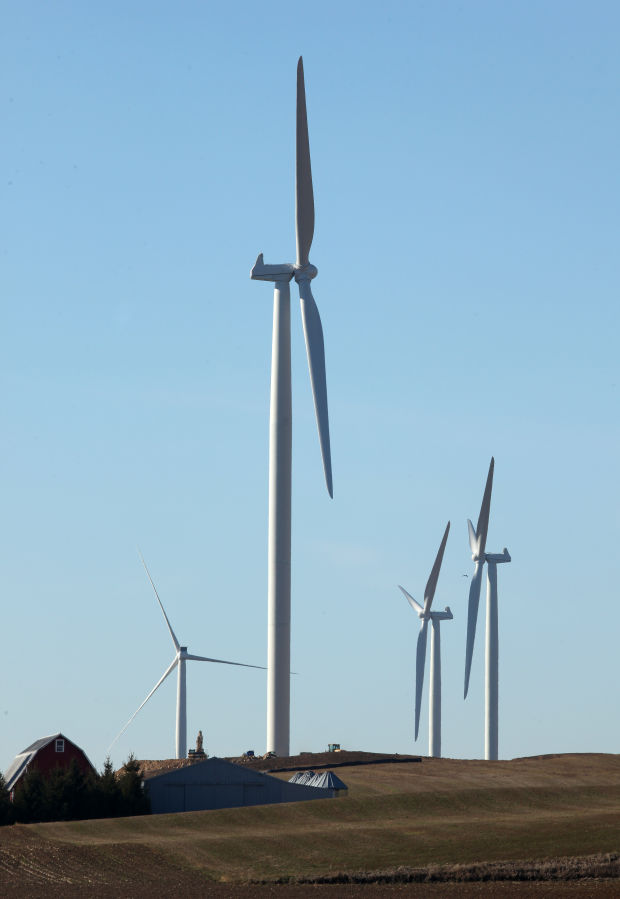by RENEW Wisconsin | May 22, 2013 | Uncategorized
Mark Redstein’s new opinion piece in the Milwaukee Journal Sentinel makes a strong case for clean energy in the state.
Over the past few years, Wisconsin’s wind industry has faced an unreasonable number of obstacles, more than any other form of energy production, nearly grinding the job- and energy-creating potential of this critical sector to a halt. If Wisconsin is going to move its economy forward, it needs to stop pushing back and open the door to clean, renewable wind energy.
Fortunately, the door has started to creak open.
On April 29, the Brown County Circuit Court dismissed a lawsuit filed by the Wisconsin Realtors Association that claimed the state’s wind siting rule, PSC 128, was improperly enacted. The judge disagreed and ruled that the Public Service Commission lawfully enacted a balanced and comprehensive wind siting rule. …
[READ MORE]
by RENEW Wisconsin | Apr 22, 2013 | Uncategorized
A new article by Erik Ness in Midwest Energy News explores some the political issues that are continuing to derail wind development in Wisconsin.
In Wisconsin, politics continue to hold back wind development | Midwest Energy News
More than two years after Wisconsin completed a bipartisan process to establish statewide standards for siting wind turbines, development remains sluggish amid continuing political pushback.
In 2012, a year that saw a nationwide surge in wind farm installations as developers rushed to beat expiring tax credits, Wisconsin added only 18 megawatts of capacity.
By comparison, Michigan and Ohio, with much lower wind potential, had already installed 138 MW and 308 MW in just the first three quarters.
Compared to other Midwestern states, Wisconsin ranks at the bottom in both wind projects under construction and in queue, according to the American Wind Energy Association.
[READ MORE]

by jboullion | Mar 26, 2013 | Uncategorized
 |
Epic Systems of Verona has erected six
wind turbines along Kickaboo Road near
Highway 12 in the town of Springfield. |
A timely editorial (relating to the SB-71 proposal) in the Wisconsin State Journal about why Wisconsin should keep it’s wind siting rules intact. Find the original posting here.
The state regulation of wind farms that Wisconsin put in place a year ago improves on the previous patchwork of local regulations.
That’s one reason why lawmakers should leave the regulation intact and reject the latest proposal to turn back to the patchwork approach.
Here’s another reason: A return to patchwork regulation would threaten the public’s interest in developing clean, renewable energy.
Wisconsin’s wind farm regulations set standards for projects, including how far turbines must be set back from nearby homes and how noisy the turbines can be. If local governments develop their own regulations, they cannot be more restrictive than the state standards.
To develop the standards, the Public Service Commission considered a range of viewpoints and studied scientific evidence on the effects of wind turbines. The resulting regulations fairly protect local interests in safety and property rights as well as the general interest in taking advantage of a green energy source.
Nonetheless, wind farm opponents continue to argue for more restrictions. This month, a group of lawmakers introduced Senate Bill 71 to permit local governments to go beyond the state regulations. Bill supporters have seized upon a study of a Brown County wind farm. The study, conducted by acoustics experts, detected largely inaudible, low-frequency sound inside three homes near the wind turbines. The study also noted that some residents complained of health problems, such as nausea and headaches.
However, the study could link the noise in only one home to a turbine. Furthermore, the study could not attribute the health complaints to the noise. The indecisive findings do not offer evidence to change the state’s regulations.
Lawmakers should appreciate the perils of putting the regulatory burden for wind farms on local governments.
First, local governments typically lack the time and resources the PSC employed to study the issue. Before the state standards were developed, some local governments rushed into extreme regulation without scientific foundation. Trempealeau County required turbines to be set back one mile from neighboring homes. That restriction virtually banned wind farm development.
Second, without state standards, the wind energy industry faces the uncertainty of a varying collection of costly local regulation. The chilling effect deprives the state of wind power development.
The effects of wind turbines should continue to be examined. Regulations may need future updating. But Wisconsin cannot afford to go backward in regulation. Wind power is too important for its potential to improve energy security, reduce air pollution and boost economic development.
Find the original posting of this article here.

